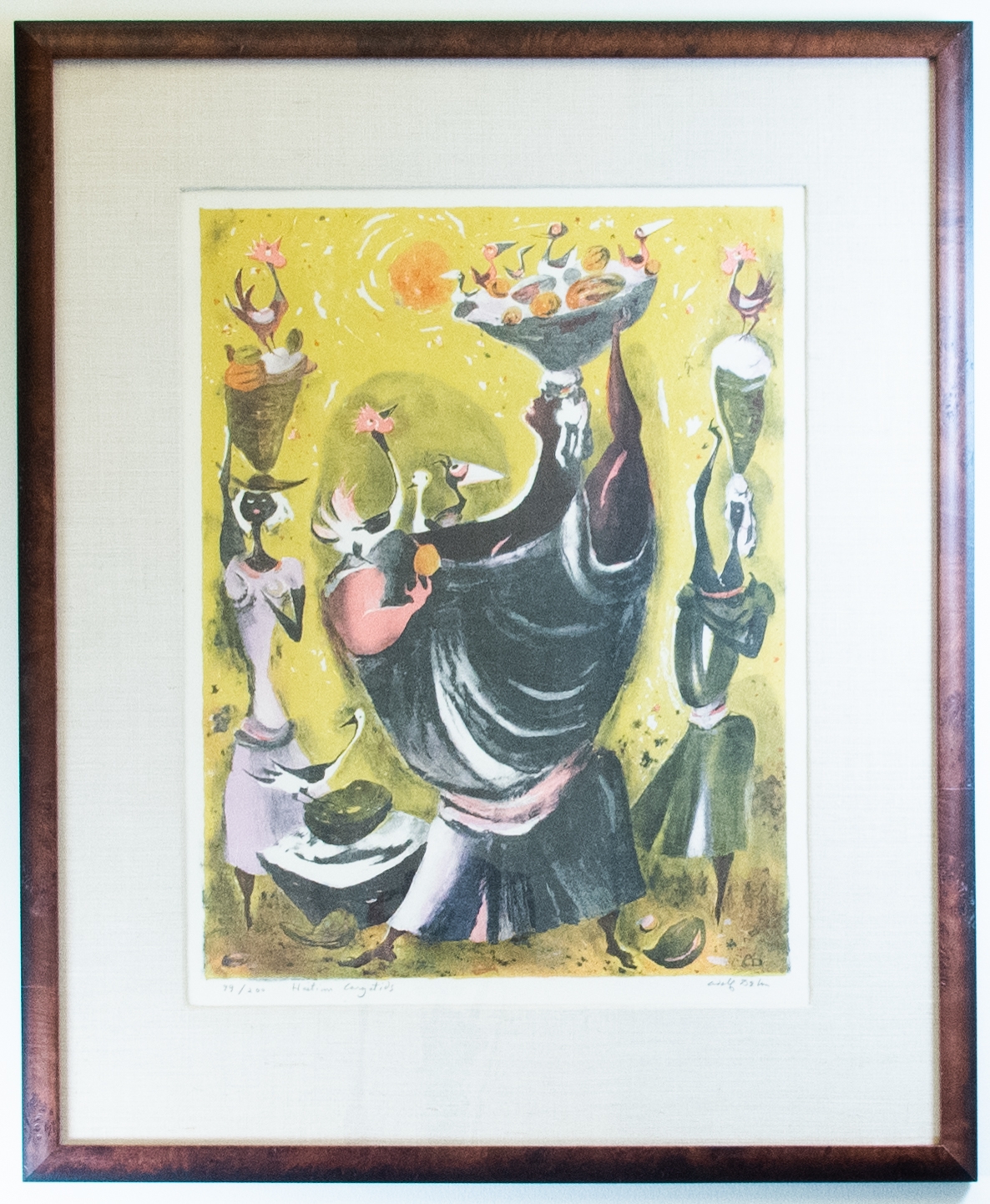All Library locations will be closing early Wednesday, November 26 at 5 p.m. and will reopen Saturday, November 29.
Haitian Caryatids
In ancient Greek architecture, caryatids are sculptures of draped female figures used in place of columns or pillars. These female structures often supported entablatures on their heads and in doing so, represented their strength and significance to the health and prosperity of society. Since the neck would otherwise be the thinnest and weakest part of the sculpture, caryatids often had thick, elaborate hairstyles that extended the length of their neck to reinforce the weight overhead. Conveniently, the association of hair with fertility and prosperity supplemented the symbolic purpose of these structures. Instead of supporting structures, the caryatids in Dehn's lithograph balance baskets of fruit on their heads. Caryatids supporting baskets on their heads are specifically referred to as "canephora" in ancient Greek scholarship, which translates to "basket-bearer".
The canephora as a symbol of strength and prosperity is recontextualized in this lithograph for village life in Haiti. Instead of elaborate hairstyles to reinforce this symbolism, each figure extends one arm to support the basket overhead, which also emphasizes the arm as the tool used to gather. The composition conveys the atmosphere of this moment through the acknowledgment of the sun. The central figure and many birds look upward toward the sun and are met with its radiance represented by subtracted color in the print. In doing so, their postures appear to exalt their bounties as well which creates cohesion between the figures and their environment. The print utilizes a limited pallet that prioritizes the fluidity of line and shape in the composition.

